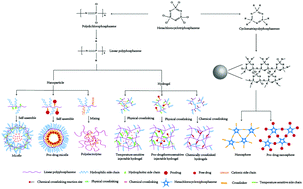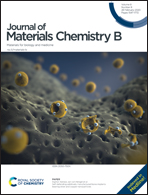Recent research progress on polyphosphazene-based drug delivery systems
Abstract
In recent years, synthetic polymer materials have become a research hotspot in the field of drug delivery. Compared with natural polymer materials, synthetic polymer materials have more flexible structural adjustability, and can be designed to obtain clinically required delivery vehicles. Polyphosphazenes are one of the most promising biomedical materials in the future due to their controllable degradation properties and structural flexibility. These materials can be designed by controlling the hydrophilic and hydrophobic balance, introducing functional groups or drugs to form different forms of administration, such as nanoparticles, polyphosphazene–drug conjugates, injectable hydrogels, coatings, etc. In addition, the flexible backbone of polyphosphazenes and the flexibility of substitution enable them to meet researchers’ design requirements in terms of stereochemistry, nanostructures, and topologies. At present, researchers have achieved a lot of successful practices in the field of targeted delivery of anticancer drugs/proteins/genes, bone tissue engineering repair, cell imaging tracking, photothermal therapy, and immunologic preparations. This review provides a summary of the progress of the recent 10 years of polyphosphazene-based drug delivery systems in terms of of chemical structure and functions.

- This article is part of the themed collection: Journal of Materials Chemistry B Recent Review Articles


 Please wait while we load your content...
Please wait while we load your content...